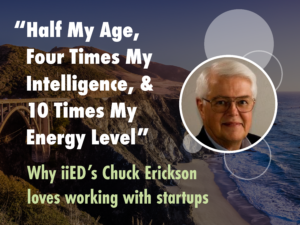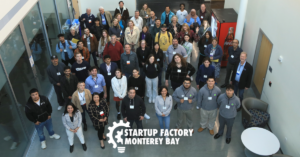Marketing in the 21st century is radically different than it was in the 20th century. Blame it on technology. Or thank technology. But changed it has, and we have to change with it. Continuing to use a 20th century marketing mindset to design 21st-century marketing programs is missing opportunities. Here’s how to think about marketing in this new century.
I grew up in the latter half of the last century and learned marketing in the 1980s. The heroes of marketing were Coca Cola, who spent more money on advertising than any other company in the world yet had pretty much the lowest marketing-$-per-unit cost of any of the soda companies; and Procter and Gamble, the company that brought us Ivory Soap, Tide and Brand Management. But I advise startups and growing companies now, nearly 20 years into the new century, and the changes in marketing technology have required me to re-tool my marketing knowledge and skills. The “marketing math” I learned in the 1980s just doesn’t work anymore; it’s time for the “new math” of marketing.
The Golden Age of Broadcast…
 The 20th century saw the rise of mass media. Radio, TV, print on a scale never seen before. These broadcast technologies allowed one person, or one show, or one marketer, to speak to millions of people at the same time. A single ad could be created and sent out to the entire nation!
The 20th century saw the rise of mass media. Radio, TV, print on a scale never seen before. These broadcast technologies allowed one person, or one show, or one marketer, to speak to millions of people at the same time. A single ad could be created and sent out to the entire nation!
This was the age of one-to-many marketing communications. One message, many recipients. Incredible efficiency and reach. A Golden Age of Broadcast led to a Golden Age of Marketing!
Becomes the New Age of Search and Social Media
 Fast forward to the 21st century (now). The internet, Google, Facebook, Twitter – these are the technologies that have emerged over the past two decades. They reach far beyond the TV or radio signal of the old technologies – they can reach nearly every corner of the globe, nearly every person on the planet. No longer just communicating to just millions, but billions.
Fast forward to the 21st century (now). The internet, Google, Facebook, Twitter – these are the technologies that have emerged over the past two decades. They reach far beyond the TV or radio signal of the old technologies – they can reach nearly every corner of the globe, nearly every person on the planet. No longer just communicating to just millions, but billions.
But these are not just 20th-century technologies on steroids.
One-to-many Communication Becomes One-to-one Communication
In the broadcast world, everyone gets the same signal. Meaning everyone gets the same message. Like Henry Ford’s manufacturing – “You can have any color you want, as long as it’s black,” marketing messages were limited in their tailoring. With broadcast technologies, the ability to “target” a message to a group of customers is very limited; you can choose to advertise to those people who watch the Beverly Hillbillies or those who watch 60 minutes, but everyone who watches the Beverly Hillbillies sees the same message. Targeting messages was limited to choosing the subset of the recipients you were most interested in communicating to, tailoring the message to that group, and ignoring that other people will receive a message not really meant for them.
Not so with the new technologies. Recently, I and my family got some Ice Cream at McConnel’s in Santa Barbara. I paid with a credit card but declined to take a receipt or give them my email address to email me a receipt. That same day, an email from McConnel’s showed up in my inbox that said, “Hey friend, we want to celebrate your birthday…but we don’t know when it is!” They knew where to find me, thanks to Square, who they use to process their credit cards, and who knows where to find me (from past transactions) and is very happy to share that information with the retailers.
Now marketers (that’s us) can know specifically who is on the receiving end of our communication. If a consumer does a search for “women’s shoes,” Google knows it. They not only know that someone searched for women’s shoes, they know that that person searched for women’s shoes. And they can connect shoe sellers to that person. They can then follow that person on the internet and bombard you with shoe ads for the next several minutes, hours or even days. And they may even know more about her buying habits – what kinds of shoes she’s purchased in the past, how she has responded to price promotions – and can then choose which specific shoes they show her and how they price them for her.
And One-way Communication Becomes Two-way Conversation
The recipients of communications through these new media can TALK BACK. They can respond. In real time. And then the company can respond back to them. One-to-one interactive conversations – and thanks to software we can carry on many (massively many) of these one-to-one conversations at the same time.
The New Math
One-to-many one-way communications has become many one-to-one two-way conversations. Today, we can have millions of customized one-to-one conversations at the same time. Millions, or even billions, of tailored conversations. And purchase is just a click away.
With broadcast messages we talked to some extra people who we were not really intending to target, but hey, no harm done, right? We were still talking to lots of the right people. Right?
Pretty much yes, that was right. In 1950.
By using this same approach today, in 2018, we’re not only missing the capabilities of the new technologies. We’re also not exploiting the changes in how buyers can respond to the message we send to them.
With the 20th-century technologies, buyers can respond in real time. Even if they don’t “buy now,” they can visit your website, sign up, tell their friends, set a reminder, all without delay. If we create a pathway from our initial communication to purchasing, and leave good breadcrumbs (“click here”) to follow the pathway, we can lead them to purchasing much more reliably than we ever could before.
Since we’re talking to them on their phones, or on their tablets, or computers, why not give them a little nudge and get them to click. Click! They’re on your website. Click! They’re looking at your product. Click! It’s in their shopping cart. Click! It’s being shipped to them, and if they don’t hurry home it’ll be there before they are.
Marketing in the 21st Century
Forget Awareness-Interest-Desire-Action. This is Click-to-Click-to-Click-to-Click. Want them to click? Give them an incentive: “Click now and get 20% off.” “Click now and get a free hat.” Want them to click? Give them an itch they can’t resist scratching: “Click here to find out that one weird trick that will shave inches off your midriff.” “Click here to see the five steps to independent wealth.”
The marketing game for many if not most companies is not “let’s spend millions on advertising to create awareness.” Maybe Coke can play that game. Most of us can’t and shouldn’t. The marketing game now is about creating engagement and action in real time.
21st Century Marketing just doesn’t look like your grandfather’s marketing!
 Brad Barbeau is Associate Professor of Entrepreneurship at CSU Monterey Bay and Executive Director of the Institute for Innovation and Economic Development at CSU Monterey Bay. He is also the Principal and Founder of Ascend Business Design & Development.
Brad Barbeau is Associate Professor of Entrepreneurship at CSU Monterey Bay and Executive Director of the Institute for Innovation and Economic Development at CSU Monterey Bay. He is also the Principal and Founder of Ascend Business Design & Development.
SaveSave



